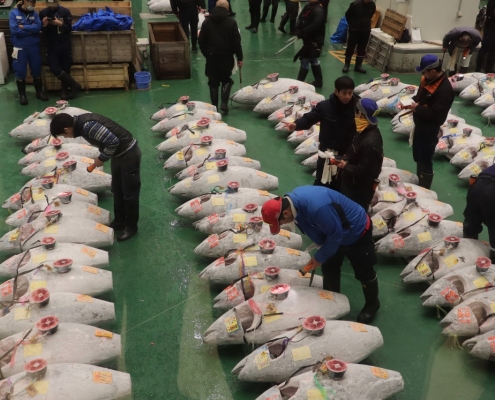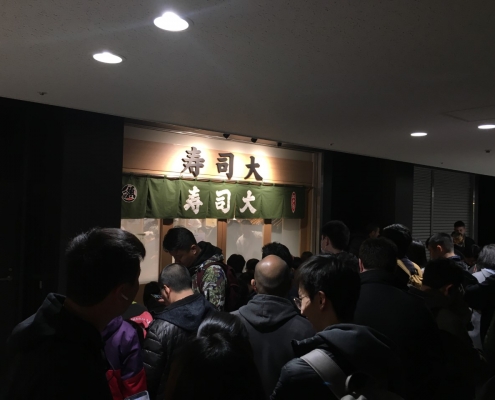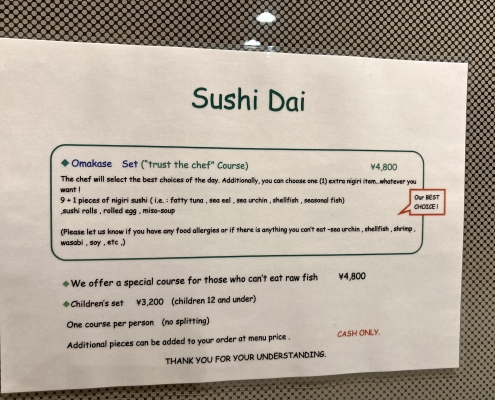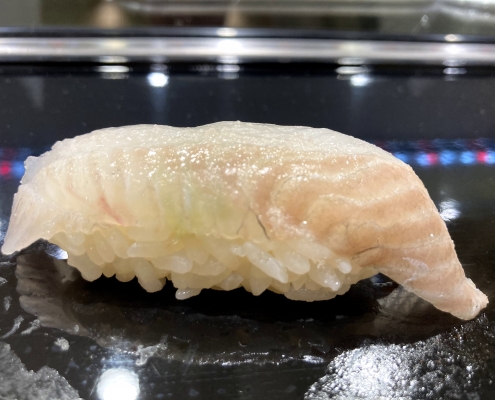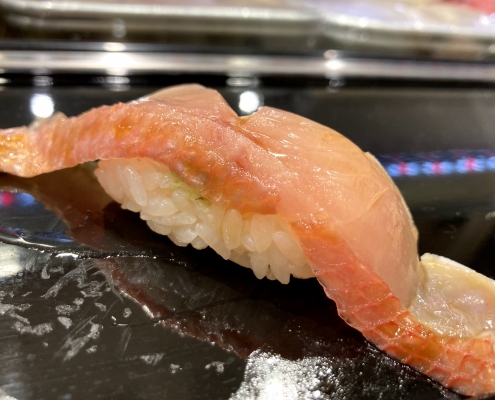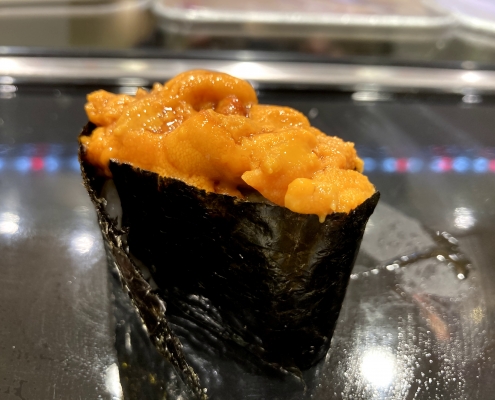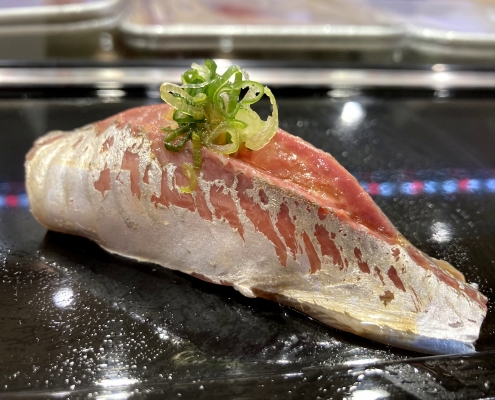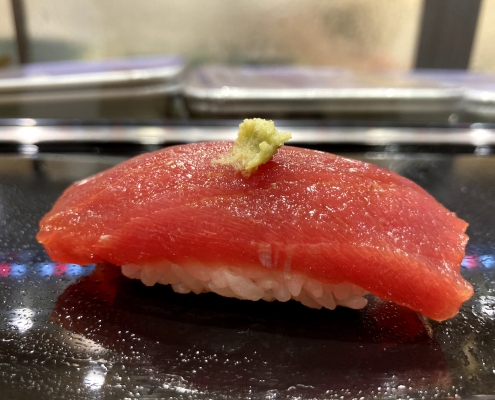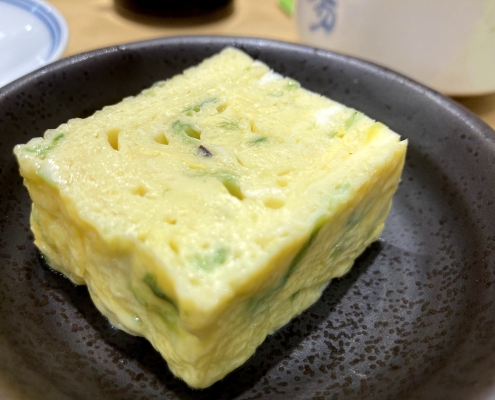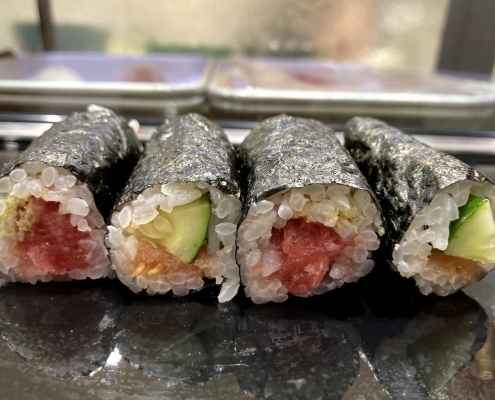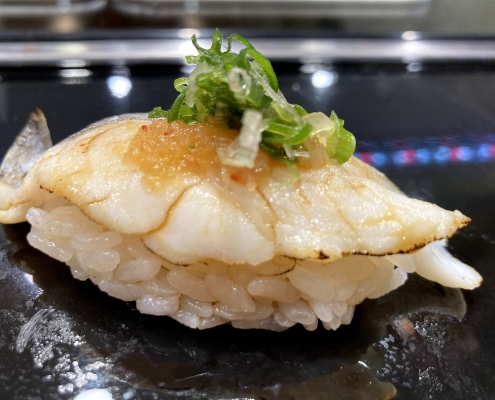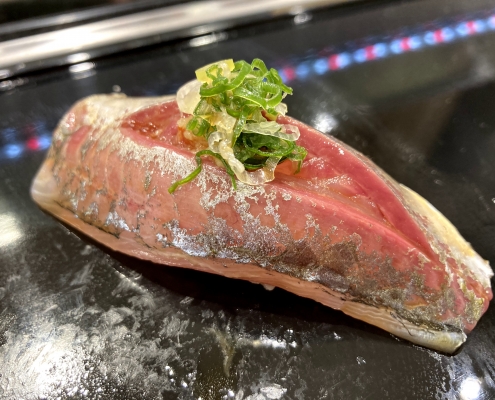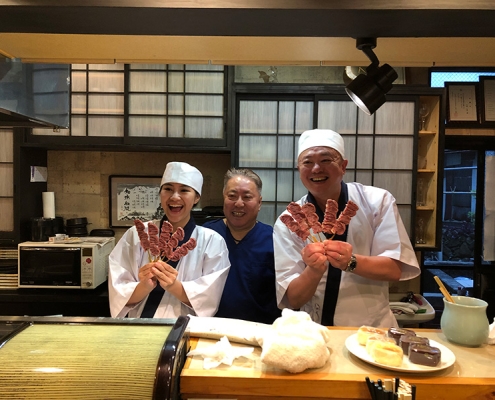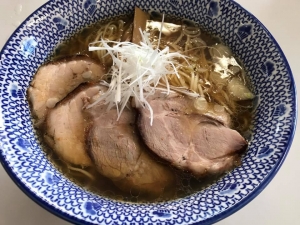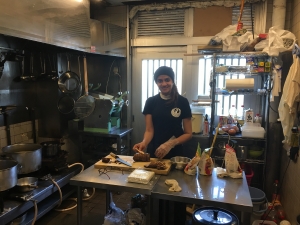I’d Die for You, Sushi Dai! The Legendary Sushi Breakfast is still a Highlight of the Toyosu Market Tour!
September 7th 2020
Contents
The legendary Sushi Dai in Tsukiji and Toyosu
For generations it has been famous among Japanese sushi lovers for being the best place in Tsukiji Market to eat delicious sushi from the early morning.
From the 2010s, it also caught the attention of foreign tourists who found out about the restaurant from guidebooks or reviews on social media. On a visit to Tsukiji Market, going to Sushi Dai was definitely a part of any tourist’s ultimate Tsukiji Market experience. It’s popularity grew further after receiving a Michelin Guide Bib Gourmand award in 2015, and at its peak, people were lining up for 3 to 4 hours in the early morning to visit the tiny 12-seat restaurant.
This legendary Tsukiji sushi restaurant moved to Toyosu Market in 2018 after the closure of Tsukiji Market. Since Toyosu Market is a little harder to access than Tsukiji was, the number of tourists has decreased slightly. However, it’s still popular to eat breakfast at Sushi Dai after watching the tuna auction just like it was back in Tsukiji.
Before the COVID-19 crisis hit, it was always inundated with tourists.
Where is Sushi Dai Located within Toyosu Market?
You can find it in the restaurant area on the 3rd Floor of the Fisheries Intermediate Wholesale Market Bldg (Block 6).
As of September 2020, wearing a mask is now required to enter the building. Market staff will also perform temperature checks and hand sanitizing for those entering the building.
What are their Business Hours?
From 5:30am to 2pm (as of September 2020).
Note that all restaurants close when Toyosu Market is shut, which is Sundays, public holidays and some Wednesdays.
How long do we have to wait?
Recently, on a weekday in September, 2020, I visited at 6:30am after watching the tuna auction.
Just a year ago in August 2019, I went at 7am and people were lining up for about an hour, like you can see in this photo.
A photo in August 2019
But now with tourists unable to enter Japan, on this day there were only two Japanese people waiting ahead of me outside. I swiftly entered the restaurant with a waiting time of only 1 to 2 minutes.
That’s an incredibly short time for Sushi Dai!
The first thing I noticed when I was guided to the counter was the partitions between each seat.
These partitions have been introduced at many sushi restaurants this year as a way to prevent droplet transmission while talking.
The sushi chef and all restaurant staff wear masks.
11 pieces of nigiri-sushi and 1 sushi roll for 4,800 JPY! (approx. 44USD)
Perhaps many reading this article have already been to Sushi Dai and will know that their most popular menu item is the Omakase Set with 10 pieces of Nigiri-sushi, plus 1 extra of your choice and 1 Sushi Roll for 4,800 JPY (approx. 44USD).
You can order your favorite pieces of sushi a la carte if you like, but the popular choice here is the Omakase Set!
Honmaguro Toro (Fatty Tuna)
Honmaguro Toro, usually the highlight of an Omakase Set at other restaurants, appears as your very first piece of sushi.
There’s nothing better than enjoying a piece of Fatty Bluefin Tuna Belly after watching the tuna auction earlier.
The moderate fatty tuna belly melts on the tongue.
Hirame (Flounder)
The second piece is Hirame flounder.
This is not eaten with soy sauce but seasoned with sea salt and lemon (or another citrus flavor) and has a light and refreshing taste.
Kinmedai (Golden Eye Snapper)
Kinmedai, known as a high-grade fish, is a deep-sea fish with white flesh. It has a hint of sweetness.
Uni (Sea Urchin)
The Uni is from Rishiri Island in Hokkaido.
Uni that have fed on Rishiri kelp, a specialty of Rishiri Island, burst with umami and are exceptionally delicious.
Aji (Horse Mackerel)
Excess moisture is removed from the firm flesh of the Aji and it is then topped with green onion and ginger.
Umami explodes in your mouth with every bite.
Hokkigai (Surf Clam)
Enjoy the chewy texture of fresh Hokkigai.
Maguro Akami Duke
Unlike the fatty tuna you had at the beginning, Akami is the lean, red flesh of the tuna which is marinated in a soy sauce, mirin and sake nikiri marinade.
Miso Soup
Take a moment here to enjoy a bowl of miso soup made with the bony parts of white fish.
Tamagoyaki (Rolled Omelet)
After the miso soup comes hot Tamagoyaki.
Hosomaki Sushi Roll
There are two kinds of Hosomaki, Tekkamaki Tuna Roll and Tarako (salted cod roe) with cucumber.
The sushi roll with the cod roe is quite unique and is sure to leave an impression.
Tachiuo (Cutlass Fish)
Seared Tachiuo, caught in Tokyo Bay, is served with a light topping of grated daikon radish and green onion.
Sushi that uses seafood caught in Tokyo Bay is called Edomae Sushi, so this Tachiuo sushi can be considered authentic Edomae Sushi.
Anago (Conger Eel)
Taste the sweetness of the tare sauce made from soy sauce and sugar together with the soft white flesh of the Anago.
One more Aji!
Many of the customers around me asked for squid but I liked the Horse Mackerel and requested an additional piece.
I love the moment when umami combines with the rich fat of the Horse Mackerel and the refreshing taste of ginger.
I would definitely recommend Horse Mackerel sushi to foreigners visiting Japan in summer.
Will 2021 be as crowded as it was before?
This time I was lucky enough to visit Sushi Dai without a long wait, but what about in the future?
It seems difficult for Japan to allow the entry of foreign tourists during 2020 so it likely won’t be until 2021 before they can start to return. Even if a vaccine is developed in the near future and travel restrictions are lifted, for a while people will still be afraid of traveling and won’t travel back and forth like they used to. It feels like it will take two to three years to return to the previous level of activity.
If you come to Toyosu Market in the early morning to see the tuna auction or to eat sushi, I’d recommend you come by train, taxi or by using Docomo Bike Share, an easy way to rent a bicycle within central Tokyo.
What would you like to know more?
Culinary Schools in Japan
Tokyo Sushi Academy
The first and the most popular sushi school in the world.
Japan Culinary Institute
Japanese culinary training including sushi, kaiseki, yakitori, wagashi and more.
Miyajima Ramen School
More than 1,000 graduates from over 50 countries.
International Ramen School
Ramen study program combined with OJT


